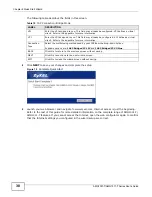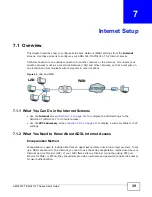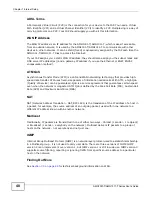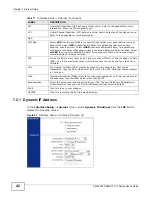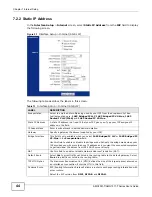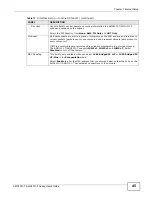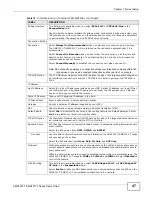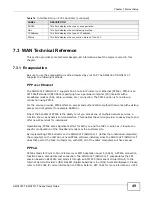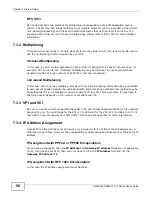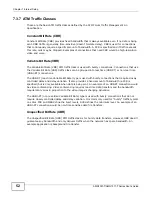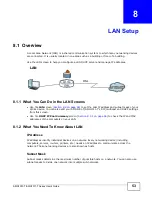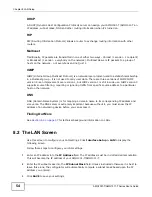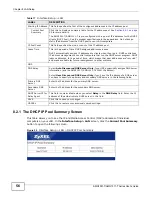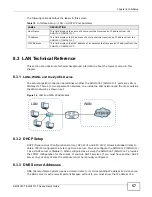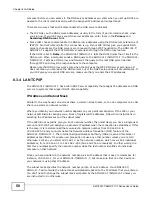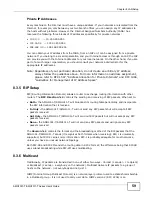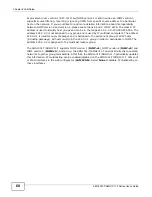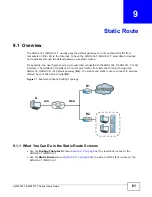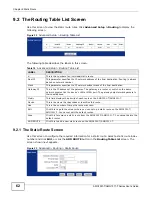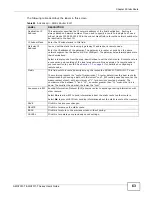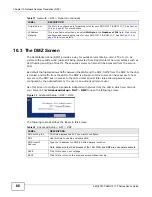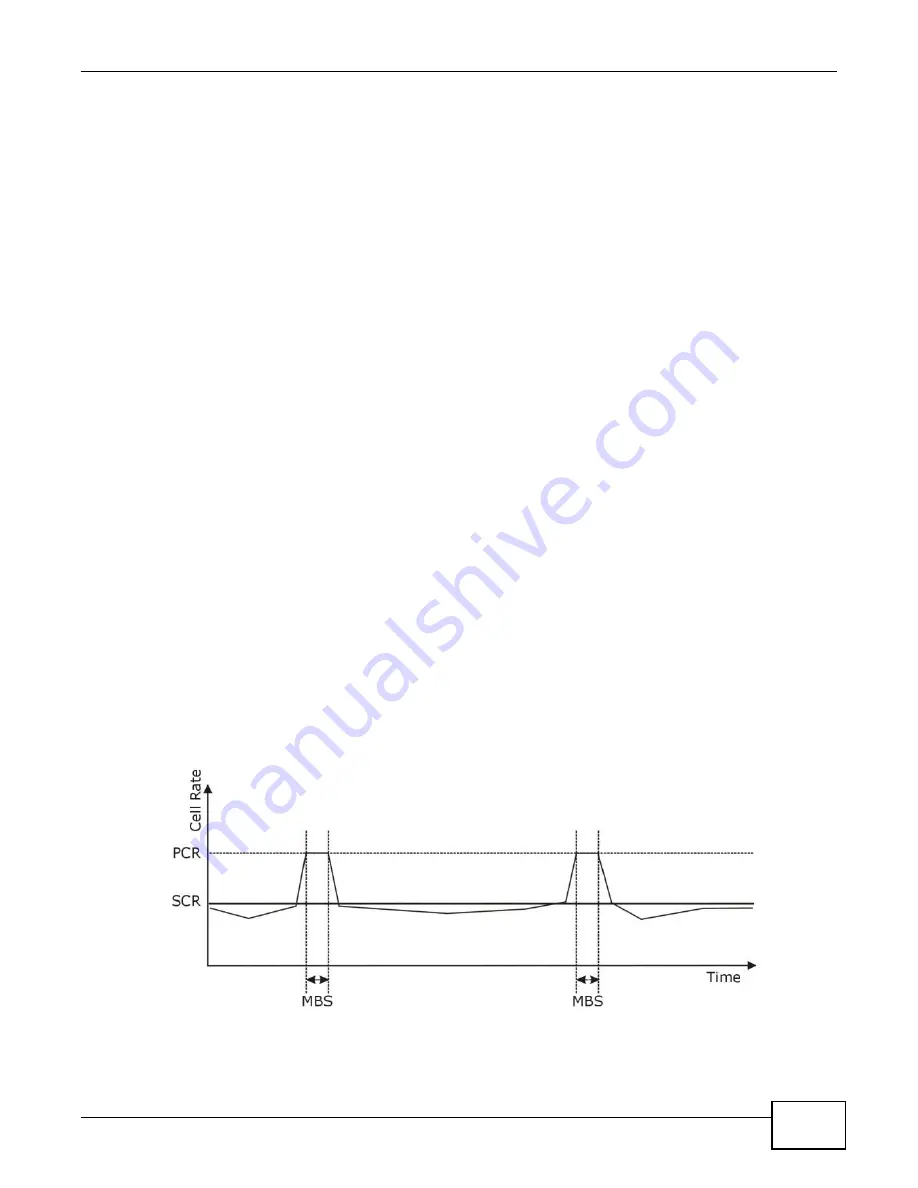
Chapter 7 Internet Setup
AMG1001-T/AMG1011-T Series User’s Guide
51
7.3.5 Always-On Connection (PPP)
An always-on connection is a dial-up line where the connection is always up regardless of traffic
demand. The AMG1001-T/AMG1011-T does two things when you specify an always-on connection.
The first is that idle timeout is disabled. The second is that the AMG1001-T/AMG1011-T will try to
bring up the connection when turned on and whenever the connection is down. An always-on
connection can be very expensive for obvious reasons.
Do not specify an always-on connection unless your telephone company offers flat-rate service or
you need a constant connection and the cost is of no concern.
7.3.6 ATM QoS
ATM QoS is an agreement between the carrier and the subscriber to regulate the average rate and
fluctuations of data transmission over an ATM network. This agreement helps eliminate congestion,
which is important for transmission of real time data such as audio and video connections.
Peak Cell Rate (PCR) is the maximum rate at which the sender can send cells. This parameter may
be lower (but not higher) than the maximum line speed. 1 ATM cell is 53 bytes (424 bits), so a
maximum speed of 832Kbps gives a maximum PCR of 1962 cells/sec. This rate is not guaranteed
because it is dependent on the line speed.
Sustained Cell Rate (SCR) is the mean cell rate of each bursty traffic source. It specifies the
maximum average rate at which cells can be sent over the virtual connection. SCR may not be
greater than the PCR.
Maximum Burst Size (MBS) is the maximum number of cells that can be sent at the PCR. After MBS
is reached, cell rates fall below SCR until cell rate averages to the SCR again. At this time, more
cells (up to the MBS) can be sent at the PCR again.
If the PCR, SCR or MBS is set to the default of "0", the system will assign a maximum value that
correlates to your upstream line rate.
The following figure illustrates the relationship between PCR, SCR and MBS.
Figure 27
Example of ATM OoS
Summary of Contents for AMG1001-T Series
Page 10: ...10 PART I User s Guide ...
Page 11: ...11 ...
Page 20: ...Chapter 1 Introducing the AMG1001 T AMG1011 T AMG1001 T AMG1011 T Series User s Guide 20 ...
Page 25: ...25 PART II Technical Reference ...
Page 26: ...26 ...


